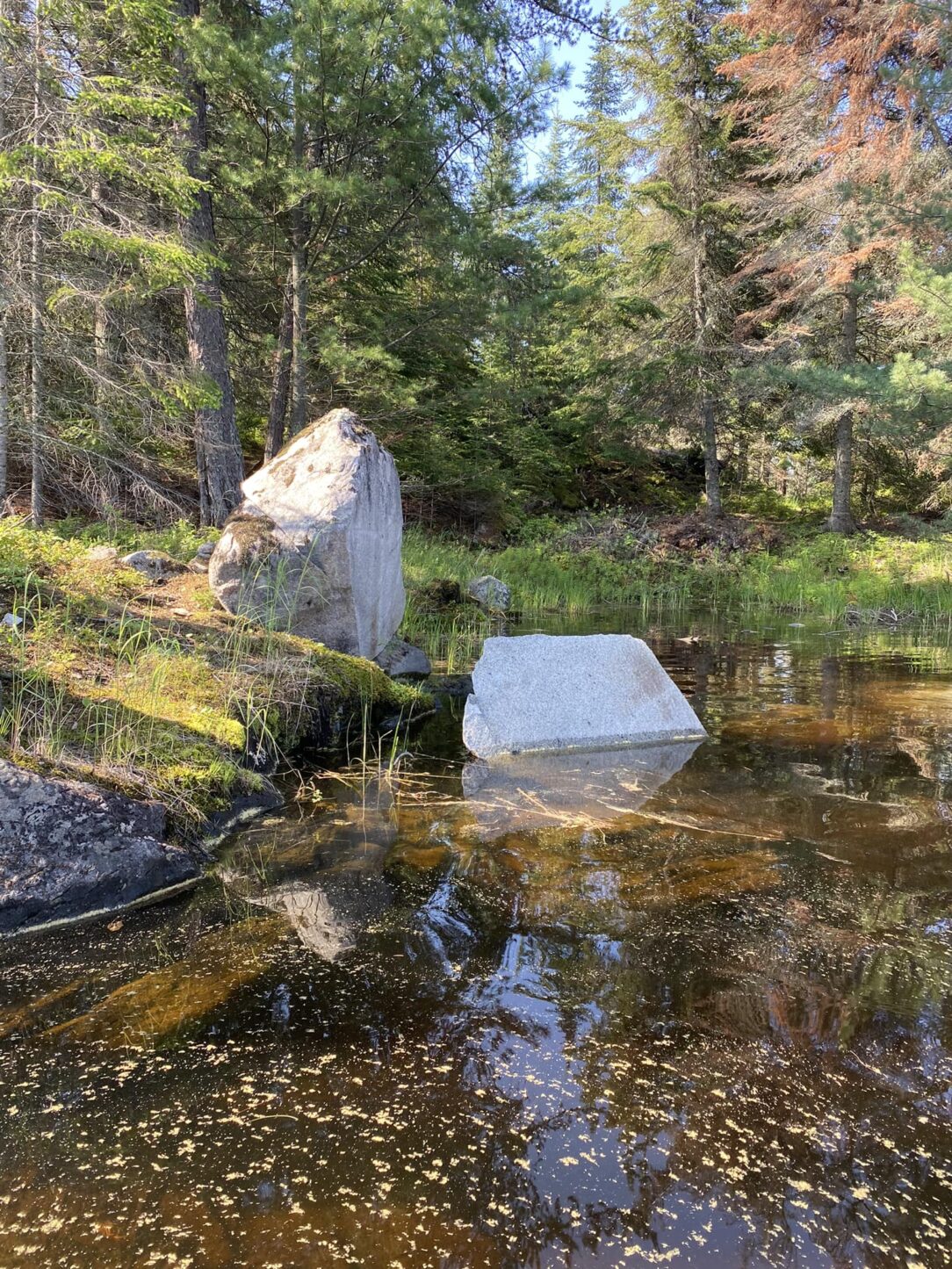In The Quiet

IN THE QUIET, tucked away side of the island, far from the open lake, a boulder has stood for, oh, about 10,000 years. Give or take, since the retreat of the last glacier. For all those millennia, nothing happened with that boulder. The bark canoes of the Anishinaabe passed by, the brigades of the fur traders, the arrival of lumbermen and miners and later commercial fishermen and resorters. 30 years ago we came to the island.
In all that time, the boulder never moved. But there began —100, 500, 2,000, 5,000 years ago—to be a small crack. It widened slowly, incrementally. Not enough so you could even notice over 30 years, but it was there. I used to like to look through that crack and get an interestingly framed view of the lake. Then one day I came back to my boulder and something was different. Where nothing had changed for 10,000 years, something had changed. Something had moved! The crack had widened just enough, gravity had pulled, and half the great rock had fallen into the still water of the little bay. I had been there only 3 days earlier, and the boulder stood still as ever. As it always had.
How I wished I had been there to see the moment, to hear the splash. But I could only imagine it. Yet the imagining is important. Sometimes we think that because something has always been, it will always be. Often the change we hope for or long for seems forever in coming. But change does come. In its own time. Perhaps even in geologic time. In boulder time. We may not be there to hear it or see it, or even expect it, but change is coming.
Of course, I love that fact that my boulder is still there. I like to look at the clean, sharp angles, and to admire the fresh, white plane of newly exposed rock, bright against the green forest, sometimes catching a ray of morning sunlight.